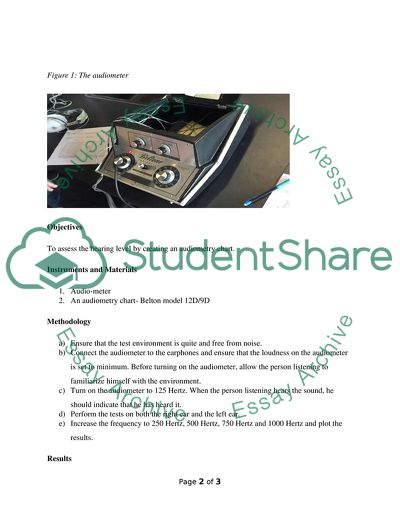Audiometry: Hearing Disorders and Audiogram Interpretation Lab Report. https://studentshare.org/physics/1873536-lab-report-3
Audiometry: Hearing Disorders and Audiogram Interpretation Lab Report. https://studentshare.org/physics/1873536-lab-report-3.


